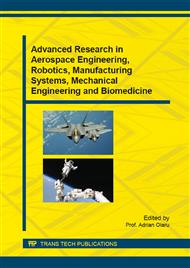p.217
p.222
p.228
p.236
p.241
p.246
p.253
p.263
p.268
Contributions to Hydrogenerator Protection when its Running in the Motor Regime is Detected
Abstract:
The paper presents a modern solution for the hydrogenerator protection implementation when its running in the motor regime is detected. Such protection function implementation is performed by a digital equipment organized around an embedded system. This equipment must be connected (locally or remote) to a computer for the configuration of the protection function and the set of the characteristic parameters. The digital equipment also performs the monitoring and display of several characteristic parameters of the hydrogenerator and allows obtaining very useful records for the post-failure analysis. The presented solution is successfully used in hydropower plants, as the results obtained in real conditions of hydrogenerator operation confirm it.
Info:
Periodical:
Pages:
241-245
Citation:
Online since:
November 2015
Authors:
Price:
Сopyright:
© 2015 Trans Tech Publications Ltd. All Rights Reserved
Share:
Citation:


